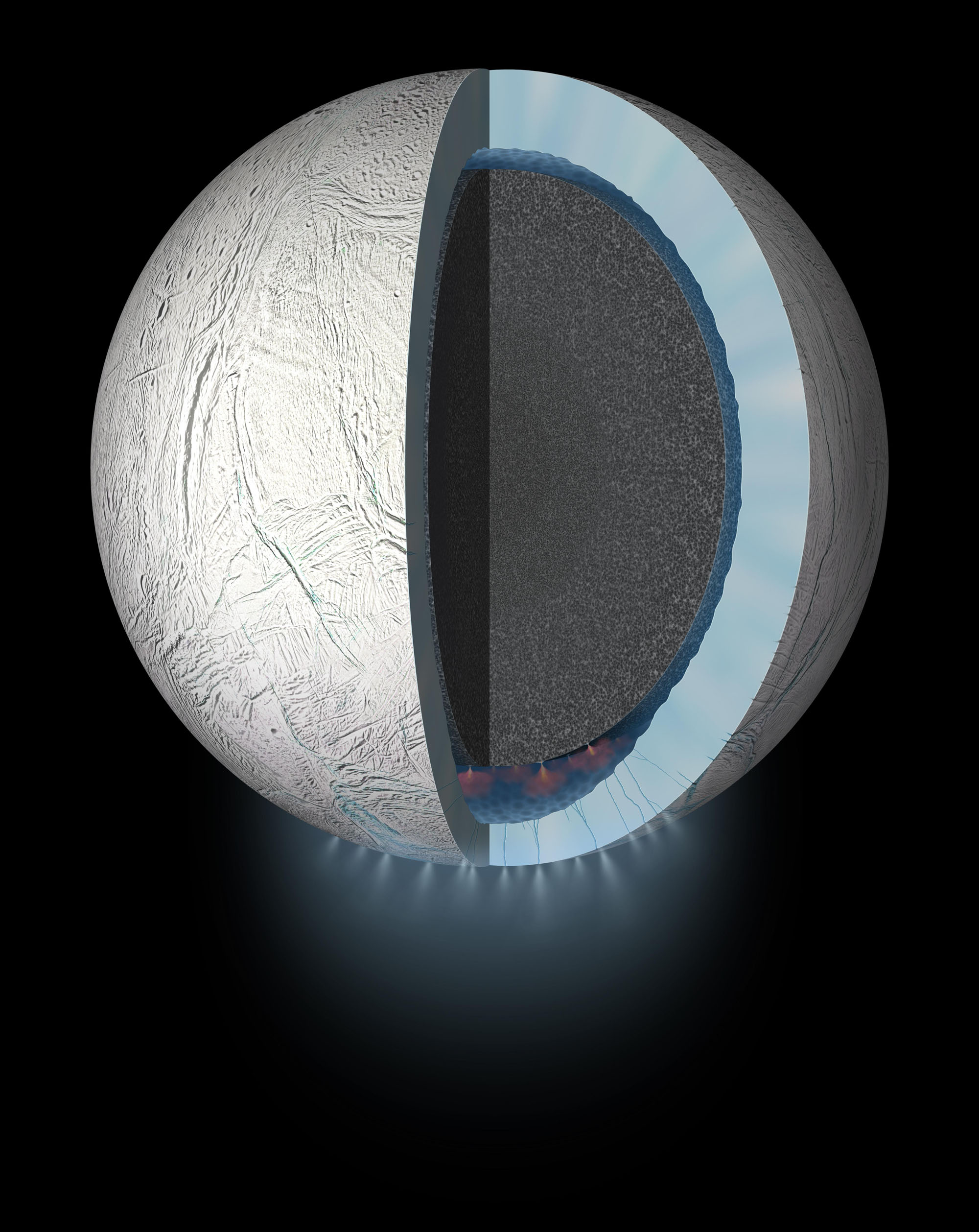What’s going on at the bottom of Enceladus’s oceans?
Along with Mars, Saturn’s moon, Titan, and Jupiter’s moon, Europa, another of Saturn’s moons, Enceladus, has long topped the list of locations to search for possible extraterrestrial life. The last probe to study it, Cassini, gave up the ghost in a fiery descent through Saturn’s atmosphere, but new discoveries are still being made in the data it transmitted back to Earth, as an article in Geophysical Research Letters shows.
Dr. Christopher Glein, the main author of the study, explained: “We came up with a new technique for analyzing the plume composition to estimate the concentration of dissolved CO2 in the ocean. This enabled modeling to probe deeper interior processes. Based on our findings, Enceladus appears to demonstrate a massive carbon sequestration experiment. On Earth, researchers are exploring whether a similar process can be used to remove CO2 emissions from the atmosphere. On Enceladus, all this is intriguingly similar to what would be expected from the dissolution and formation of certain mixtures of silicon- and carbon-containing minerals on the seafloor.”
It is also likely that there are hydrothermal sources at the bottom of Enceladus’s oceans, like those that can be found on Earth. These sources emit hot, energy-rich fluids full of minerals that contribute, at least on Earth, to flourishing ecosystems.
“The dynamic interface of a complex core and seawater could potentially create energy sources that might support life,” says Dr. Hunter Waite, who is responsible for Cassini’s Ion Neutral Mass Spectrometer (INMS). “While we have not found evidence of the presence of microbial life in the ocean of Enceladus, the growing evidence for chemical disequilibrium offers a tantalizing hint that habitable conditions could exist beneath the moon’s icy crust.”
“Distinct sources of observed CO2, silica, and H2 imply that the moon has mineralogically and thermally diverse environments in a heterogeneous rocky core,” says Glein. “We suggest that it is composed of a carbon-rich upper mantle and a serpentinized core.”
Carbonates commonly occur on Earth in sedimentary rocks, such as limestone; serpentines, in contrast, are formed from a thermal reaction between magnesium- and iron-rich minerals. The H2 measured in the plumes might have been produced in the oxidation of iron, while hydrothermal activity released silicon-rich liquids from the carbonate rocks. A heterogeneous structure such as this would be helpful for the formation of life, in any case, according to the researchers.
